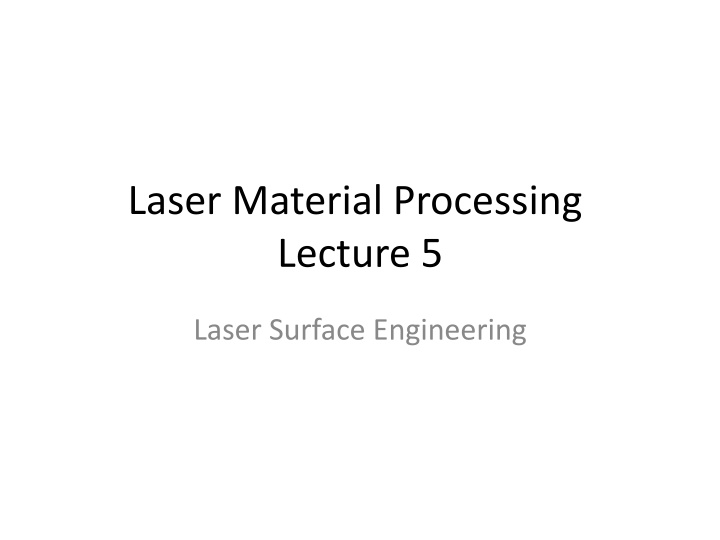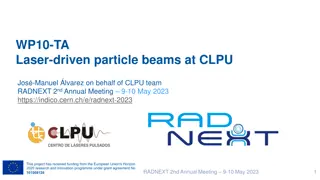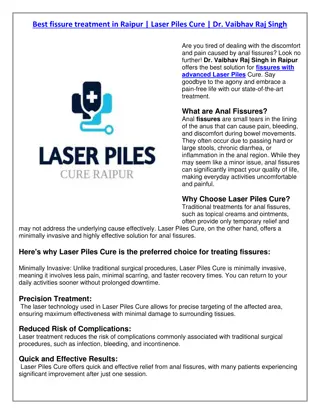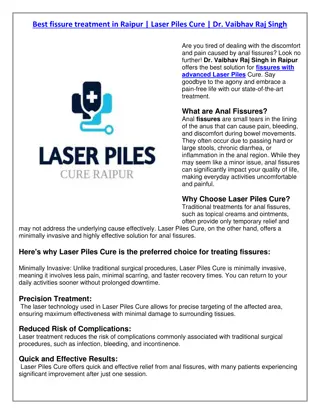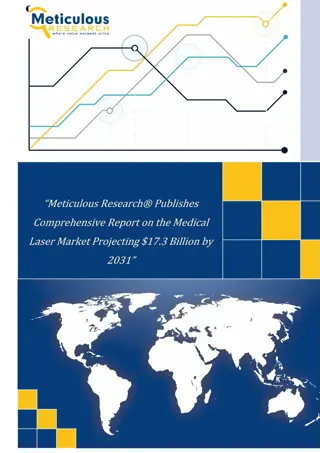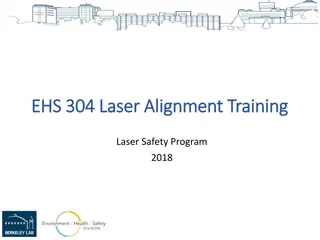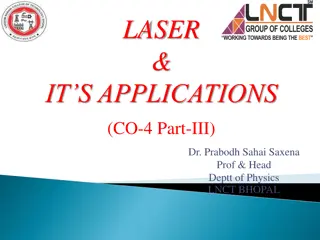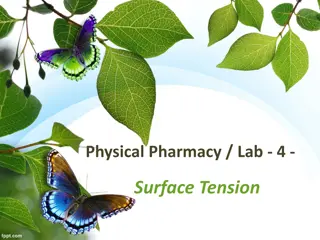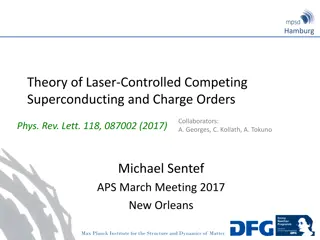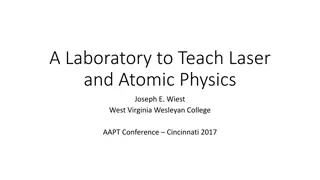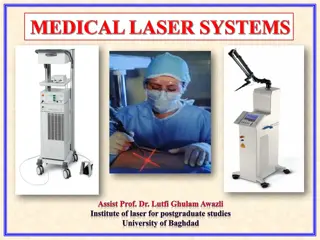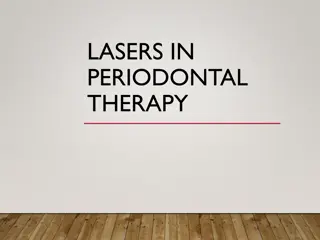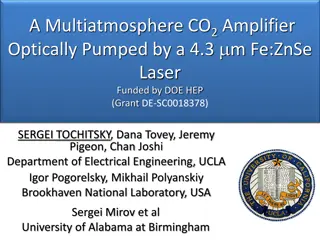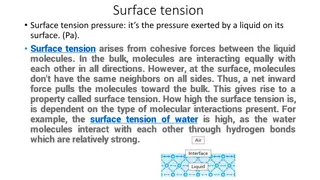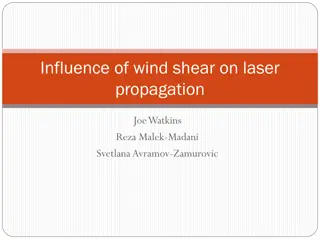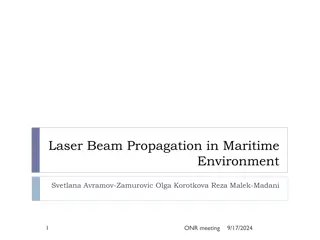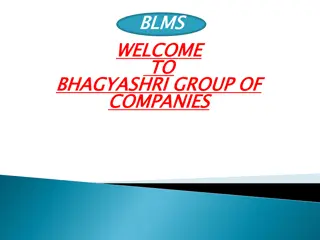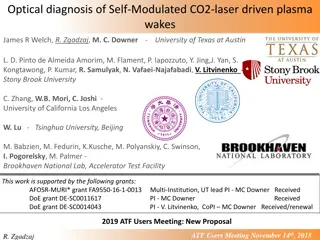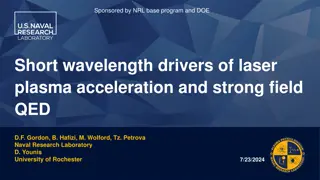Laser Surface Engineering: Enhancing Material Properties
Laser surface engineering techniques play a crucial role in improving the properties of engineering materials. Processes such as laser heating, metallurgical changes, and chemical modifications are utilized to enhance mechanical and chemical properties, prevent failures due to corrosion or wear, and achieve surface modifications without affecting the base metal. By implementing various methods like heat-treating, glazing, and cladding, the surface properties can be tailored to meet specific requirements, resulting in enhanced performance and durability of components.
Download Presentation

Please find below an Image/Link to download the presentation.
The content on the website is provided AS IS for your information and personal use only. It may not be sold, licensed, or shared on other websites without obtaining consent from the author.If you encounter any issues during the download, it is possible that the publisher has removed the file from their server.
You are allowed to download the files provided on this website for personal or commercial use, subject to the condition that they are used lawfully. All files are the property of their respective owners.
The content on the website is provided AS IS for your information and personal use only. It may not be sold, licensed, or shared on other websites without obtaining consent from the author.
E N D
Presentation Transcript
Laser Material Processing Lecture 5 Laser Surface Engineering
Laser Surface Hardening Videos https://www.youtube.com/watch?v=rdl0Bdk Wby0
Laser Surface Engineering Failure of engineering materials due to: corrosion, oxidation, friction, fatigue and wear/abrasion is most likely to initiate from the surface because: (i) free surface is more prone to environmental degradation, and (ii) intensity of externally applied load is often highest at the Surface .
Laser Surface Engineering -Laser heating produces local changes at the surface of the material whilst, leaving the properties of the base metal component unaffected -The principle laser surface engineering applications can be divided into three broad areas (Figure 1): .
Laser Surface Engineering The above processes can also be divided into: those relying on metallurgical changes in the surface of the bulk material i.e. transformation hardening, annealing, grain refining, glazing and shock hardening, and those involving a chemical modification to the surface by addition of new material i.e. alloying and cladding.
Laser Surface Engineering Heating without melting, commonly know as heat-treating Both mechanical (hardness, abrasion, resistance etc.) and chemical properties, (corrosion resistance etc.) can often be greatly enhanced through the metallurgical reactions produced during these heating and cooling cycles. Heating with melting, i.e. laser glazing, surface homogenization, remelting. This method produces very rapid heating and melting and cooling to modify the surface properties. Melting with addition of material , i.e. cladding, alloying impregnation, which involve smelting of the surface plus material added to the surface to form a modified surface layer.
Laser Surface Engineering -Figure below presents another brief classification of different LSE methods that involve mainly two types of processes: microstructural modification of the surface without any change in composition while the other requires both microstructural as well as compositional modification of the near-surface region.
Laser Surface Engineering Figure below shows a range of laser material processes that can occur at different power densities and interaction time and Figure bellow shows a modified version representing only the heat treatment processes
Laser Surface Engineering -The modification of the surface by heat treatment techniques provides a solution to face the wear, corrosion resistance etc. and to get other properties desirable for its service use -Currently there are a wide range of techniques for surface modification are: -Thermal treatments o Induction hardening o Flame hardening o Laser hardening o Spark hardening o Electron hardening .
Laser Surface Engineering -Thermochemical diffusion treatments o Carburising (gas, liquid, pack) o Carbonitriding (gas, liquid) o Nitrocarburising (gas, liquid) o Nitriding (gas) - Mechanical treatments o Peening o Fillet rolling available
Laser Surface Hardening Laser surface hardening normally involves exposing the surface of a material to a thermal cycle of rapid heating and cooling such that the surface layers are first austenitized,
Laser Surface Hardening and then quenched(cooled very rapidly by a rate of 10 7 K/sec via conduction of heat through the base metal of the target) , to induce martensitic transformation. The process does not involve melting, and the transformations occur in the solid state.
Laser Surface Hardening The setup for laser surface heat treatment is illustrated schematically in Fig below . Setup for laser surface heat treatment Rapid cooling results from mass or self-quenching into the bulk surrounding material, and may result in martensitic transformation even in some low-carbon steels.
Important Criteria for Laser Surface Hardening There are two criteria that are essential for a successful laser surface hardening operation: 1. For steels, the region to be hardened needs to be heated well into the austenite temperature range, and be maintained in that temperature range long enough for carbon diffusion to occur. 2. There must be adequate mass in contact with the region to be hardened to permit self-quenching by conduction into the bulk material.
The Essential Steps Involved In Laser Surface Hardening 1. Cleaning to remove surface contaminants such as oil. 2. Masking to limit hardening to desired areas only. This step is not always necessary. 3. Coating to increase beam absorption. 4. Hardening the actual laser treatment. 5. Tempering to reduce crack susceptibility of the fully martensitic case. 6. Cleaning to remove any remaining coating. 7. Inspection to ensure no defective parts are produced.
Advantages Of Laser Surface Hardening 1. Rapid heating and cooling. This enables steels of lower hardenability to be heat treated such as low carbon steel . 2. The resulting heat-affected zone is minimal. 3. Minimal distortion due to low-heat input. 4. Localized heat input enables only desirable regions to be heat treated. 5. Ease of processing complex shapes due to the ability to scan the beam over the Part 6. More uniform case hardness. 7. No external quenching is necessary since the process often involves self quenching. 8. Minimization of fumes and dirt that result from heating and quenching. 9. The short cycle time results in relatively fine-grained structure. This enables higher strength and good fatigue resistance to be achieved.
Disadvantages Of Laser Surface Hardening 1.Due to the short interaction times, coarse structures tend to be difficult to laser heat treat. These include coarse pearlite, blocky ferrite, and steels that contain spheroidal carbides and cast irons that consist primarily of graphite without any pearlite. The austenite may not be completely homogenized in such materials, and thus soft spots may occur in the hardened zone. 2.High-capital cost of the laser. 3.The need for sufficient mass for self-quenching
Home Work -Explain the principle of laser surface hardening with representation Figures
